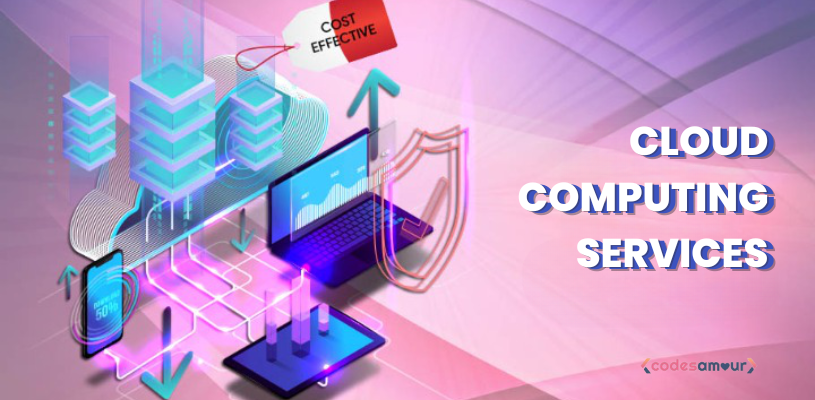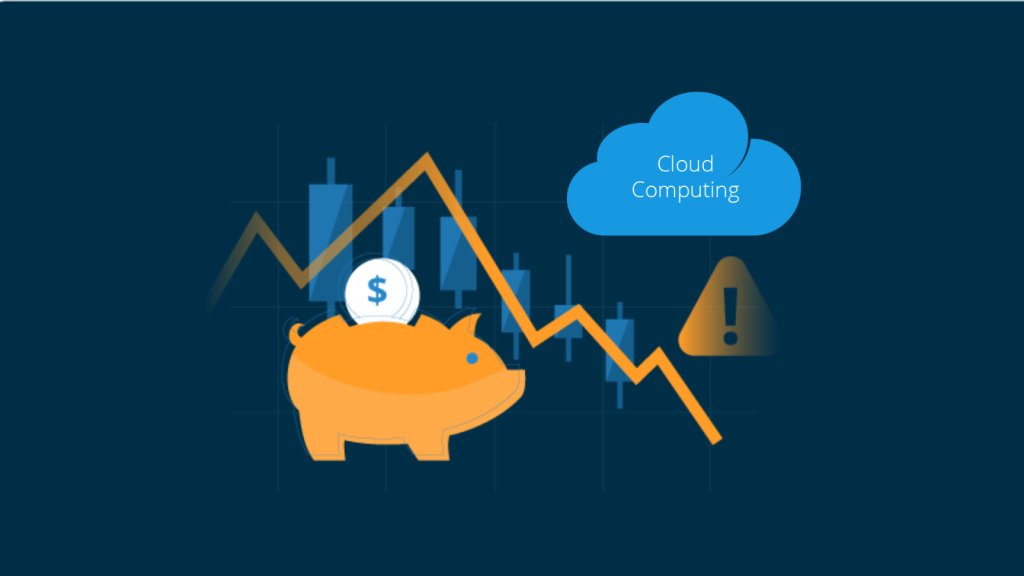Did you know that cloud computing has revolutionized business operations by providing scalable and cost-effective solutions for IT infrastructure needs? Yes, that’s right! Shifting from traditional on-premises systems to cloud-based platforms can significantly reduce operational costs for businesses of all sizes.
Are you looking for ways to cut down on your IT infrastructure costs? Cloud computing services might be the answer you’ve been searching for! With cloud-based platforms, you no longer need to invest in expensive hardware and infrastructure. Instead, you can leverage the power of the cloud to access a wide range of services and tools on a pay-per-use basis.
One of the benefits of cloud computing is its scalability. With cloud-based platforms, you can scale your resources up or down as needed to accommodate changes in demand or business requirements. It means you no longer need to worry about overprovisioning your IT infrastructure or running out of capacity during peak periods.
So, are you ready to take advantage of the many benefits of cloud computing for your business? With a wide range of cloud computing services providers available, there’s never been a better time to make the switch. Whether you choose Amazon Web Services, Google Cloud Platform, or another provider, you can be sure that cloud computing will help you to achieve your IT goals while significantly reducing your operational costs.
Let’s start with it!
What is Cloud Computing?
Cloud computing services deliver computing resources, such as servers, storage, databases, software, and networking, over the Internet on a pay-as-you-go basis. Instead of relying on local servers or personal computers, businesses and individuals can access these resources through a network of remote servers maintained by cloud service providers.
It offers a variety of benefits. Firstly, they provide scalability, allowing users to scale up or down their computing resources based on their needs without upfront investments in hardware or infrastructure. This flexibility enables businesses to adapt to changing demands.
Secondly, cloud computing services offer reliability and availability. Cloud providers maintain redundant infrastructure and data centers, ensuring high levels of uptime and minimal disruptions to service. It is vital for businesses that rely heavily on continuous access to their applications and data.
Additionally, cloud services provide cost efficiencies. Users only pay for resources they use, eliminating the need for upfront capital investments in hardware or software licenses. This cost model allows businesses to reduce operational expenses and allocate budgets more effectively.
Types of Cloud Computing Services
Computing services offer a wide range of options to meet various business needs and enable organizations to leverage the power of the cloud. There are three primary types of cloud computing services: Infrastructure as a Service (IaaS), Platform as a Service (PaaS), and Software as a Service (SaaS). Each type provides distinct functionalities and levels of control for users.
Infrastructure as a Service (IaaS)
IaaS is the most basic form of cloud computing. It provides virtualized computing resources over the Internet allowing users to manage and control their infrastructure.
Using IaaS, organizations can rent virtual machines, storage, and network resources from cloud providers. Users have the flexibility to install and configure software and operating systems on these virtual machines, giving them control over the underlying infrastructure.
Platform as a Service (PaaS)
PaaS offers a higher abstraction compared to IaaS. PaaS provides a platform and environment for developers to build, test, and deploy applications without worrying about the underlying infrastructure.
Cloud providers offer a range of tools, programming languages, and development frameworks, reducing developers’ challenges to create and deploy applications. PaaS enables rapid application development and scalability and automates many administrative tasks.
Software as a Service (SaaS)
SaaS is the most advanced form of services models of cloud computing. With SaaS, users can access software applications over the Internet on a pay-per-use basis. SaaS applications cover multiple functions, including customer relationship management (CRM), enterprise resource planning (ERP), collaboration tools, and more. Users only need a web browser or mobile app to access and use these applications, making them highly convenient and accessible.
Each cloud computing service offers its advantages and caters to different user requirements. Organizations can choose the type that best aligns with their needs, whether it’s gaining control over the infrastructure (IaaS), simplifying application development (PaaS), or leveraging ready-to-use software applications (SaaS). The flexibility and scalability provided by cloud computing services have revolutionized business operations and are essential components for the digital transformation journey.
Some leading cloud computing service providers include Amazon Web Services (AWS) and Google Cloud Platform (GCP) offer a range of cloud-based services and tools. Let’s see the difference between them;
What’s the Difference Between Google Cloud and AWS?
Google Cloud and Amazon Web Services (AWS) are the most popular and latest cloud computing platforms. Both offer a maximum range of services, including computing, storage, networking, and database management. However, there are some differences between the two that businesses and developers should consider when choosing between them.
One difference between Google Cloud and AWS cloud computing is their pricing models. Google Cloud uses a per-minute billing system, which means users will only pay for the exact amount of resources they use.
In contrast, AWS uses a per-hour billing model, which can result in users being charged for unused resources if they are not careful. It means Google cloud computing services are generally more cost-effective for short-lived workloads, while AWS is better suited for longer-term projects.
Another difference between the two platforms is their approach to artificial intelligence (AI) and machine learning (ML). Google Cloud has invested heavily in developing advanced AI and ML tools, such as TensorFlow and Cloud AutoML, that allow developers to include models easily. In contrast, AWS has a more traditional approach to AI and ML, with services such as Amazon SageMaker and Amazon Rekognition that require more technical expertise to use effectively.
When the breadth and depth of services offered, AWS has a slight edge over Google cloud computing services. AWS has been around longer than Google Cloud and has had more time to develop its service portfolio. As a result, it offers a range of services, such as Amazon Glacier for cold storage, AWS Elastic Beanstalk for deploying web applications, and Amazon Aurora for high-performance relational databases.
Google Cloud!
Google Cloud is catching up quickly and recently introduced several new services, such as Cloud Run for serverless computing and BigQuery for data warehousing, that are starting to close the gap.
Finally, there is the issue of customer support. Amazon server services have a well-established reputation for excellent customer service, with 24/7 support and a range of resources available to help users to troubleshoot any issues they encounter.
On the other hand, Google Cloud has a less extensive support network and criticized in the past for being slow to respond to customer queries. However, Google’s continuous efforts to improve customer support in recent years may be less of a factor going forward.
7 Ways To Cut Business Costs Through Cloud Computing:
Cloud computing has revolutionized businesses’ operations by enabling them to access computing resources on-demand over the Internet. This technology has not only improved flexibility, scalability, and security. But also helped businesses to save money by reducing infrastructure costs. Here are seven ways to cut business costs through cloud computing managed services:
Pay-As-You-Go Pricing Model:
With cloud computing, businesses can access computing resources such as servers, storage, and databases on-demand and pay only for what they use. This pay-as-you-go pricing model eliminates the need for businesses to invest in expensive hardware and software upfront, reducing capital expenditures.
Reduced Hardware Costs:
Cloud computing services eliminate the need for businesses to maintain their own servers, storage, and networking equipment. It significantly reduces hardware costs businesses can use cloud infrastructure providers and pay only for what need.
Lower Energy Bills:
Running a data center requires electricity to power and cool the equipment. By using cloud computing, businesses can reduce their energy bills as they are no longer responsible for maintaining their data centers.
Scalability:
Cloud computing allows businesses to scale their resources up or down as needed. It means a company can increase its computing resources during busy periods and scale back down when demand decreases. This approach enables businesses to reduce their costs by only paying for what they use.
Increased Productivity:
By using cloud computing services, businesses can reduce the time their IT teams spend on maintenance and administration tasks. It allows us to focus on more strategic tasks that drive innovation and growth. This increased productivity can help businesses to reduce their labor costs by making better use of their existing workforce.
Lower Software Costs:
Many cloud providers offer a wide range of software applications that can be in demand. It eliminates the need for businesses to purchase and maintain their software licenses, reducing software development costs.
Improved Security:
Cloud providers offer advanced security features that are often more robust on-premise. By using cloud computing, businesses can reduce the risk of cyber-attacks, data breaches, and other security threats. It can help businesses to reduce the costs associated with mitigating the impact of a security breach.
Read More Blogs:
Hire Dedicated Developers | 3 Perks, Challenges
Top 05 Reasons to Hire PHP Developers for Your Project.
Outsourcing Software Development Basics You Need To Know
Conclusion:
Cloud computing services allow a cost-effective alternative to traditional IT infrastructure. By shifting to the cloud, businesses can reduce upfront capital expenses, take advantage of economies of scale, and eliminate the need for on-site hardware maintenance.
These benefits make cloud computing an attractive option for organizations looking to optimize operational costs and improve overall efficiency. Amazon Web Services and Google Cloud Platform are two of the leading cloud providers in the industry, offering a wide range of services across all three categories of cloud computing.





